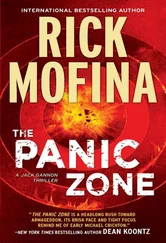Speakers crackled on the line as the FAA led the teleconference with a short roll call. The same array of national security offices from earlier calls and meetings were represented.
“Here are the facts, people,” Estevan Diaz, chief operating officer of the FAA’s Air Traffic Organization, began with a lightning-fast summary of NorthSun Airlines Flight 118 and Trans Peak Airlines Flight 2230, nonstop to JFK.
“One Eighteen out of Miami is Seattle-bound. It’s a Startrail AV600. The crew count is sixteen. The passenger count is six hundred. The second plane, Twenty-two Thirty out of LA, is headed for JFK. The plane is an Ultra Supreme 880. The crew count is fourteen. The passenger count is four hundred ninety-five. In total, we have eleven hundred and twenty-five souls aboard these two planes.”
Diaz gave the course coordinates for each jet, which Hooper recorded in the notes he was making in his laptop.
“Given our current situational concerns, we believe that the flight systems of both aircraft have been breached. Both aircraft employ aspects of Richlon-Titan’s fly-by-wire systems. We’re also taking into account our new intel-that the Zarathustra email was sent to the Kuwaiti Embassy in advance of the Shikra Airlines crash, confirming that the suspects have the ability to undertake cyber hijackings. We’ve alerted NORAD and the National Military Command Center to the flights, as well as all national security organizations, and we’re consulting the planes’ makers and the airlines on the situation.”
The White House national security advisor was the next to speak.
“So we have two remotely hijacked planes in two different regions of the country. Are there any others reporting trouble?”
“No others,” Diaz said.
“What’s the status of action to bring them down safely?” the White House advisor asked.
“Yes.” Cord Bolton, office deputy director for operations for the military command center at the Pentagon, cleared his throat. “At this time we’re scrambling fighters to the aircraft for escort or other operations.”
“And our pursuit of the suspects?” the White House advisor asked.
“We’re poised to launch an arrest operation near Galeton, Colorado, where we’ve located a vehicle rented by two of the three suspects,” Kal McClure, with the FBI director’s office, reported.
“How much time before we have an arrest?”
“I’m advised that we’re within half an hour, maybe less,” McClure said.
“And the third suspect?” the advisor asked.
“We’re still in pursuit. We believe he’s in Washington, DC.”
“Any other actions before we brief the president?” the advisor asked.
“The FAA is recommending an immediate national ground stop of all nonmilitary and nonemergency aircraft,” Diaz said.
“We’ll brief the Oval Office. Anything else?” the advisor asked.
“Oh, no,” Hooper said aloud.
“Excuse me? What was that?” the White House advisor asked.
Hooper, who’d been working as fast as he could making calculations, turned his laptop computer to Reed Devlin and whispered, “Reed, look. Of over five thousand flights in the air, only two have reported control issues. Given their present courses, these two aircraft will intersect somewhere over Galeton, Colorado, within forty minutes.”
Devlin’s face whitened and he tapped the shoulder of the supervisor next to him. Soon, the NTSB chairman spoke.
“Yes, this is the NTSB. Inform the president that our rough estimates show that these two aircraft are on a collision course that will end in about forty minutes over Colorado.”
“You’re certain?” the White House advisor asked.
The NTSB boss looked at Hooper, who nodded.
“We’re certain,” the NTSB chairman said.
“Deputy Director Bolton?” the advisor said.
“Yes?”
“What’s the ETA before the fighters reach the jetliners?”
The director did a quick calculation then said, “They should reach the respective aircraft within fifteen minutes.”
“We’ll brief the president. If we can’t restore control of the planes to the crews, we’ll be forced to consider the option of engagement.”
Weld County, Colorado
High above the vast reaches of the empty prairie, an FBI drone scoured the ground below.
It flew at a height that kept it invisible and silent from detection.
Equipped with high-powered video cameras and sensors, the small surveillance aircraft gave agents at the command post in Galeton a critical aerial view of the area where the GPS trail of their subjects had stopped.
The agent piloting the drone at a control console exercised the precision of a surgeon, carefully watching the video screen as she stabilized its position.
The camera panned, captured objects, then zoomed in.
The clear image of a lone vehicle emerged on the screen. Near the vehicle two people came into view, one male and one female, sitting on a blanket with laptop computers.
The camera pulled in closer.
“Is that the grip of a handgun by the male’s leg?” asked Nick Varner, who huddled with other agents and SWAT team leaders near the monitor.
“We can’t confirm,” the drone pilot said. “But that’s as close as we’re going to get, sir.”
“All right, let’s go,” Burt Young, the FBI SWAT commander, said. Then he instructed the drone pilot, “Keep us updated on movements because they’re going to see us coming.” Young confirmed coordinates with the other teams, who would each take a compass point for their approach, boxing in their subjects. Then he turned from the group and signaled to his team. They shrugged into their gear and climbed into the vehicles parked outside.
Varner strapped on a vest and helmet, checked his weapon and found a seat next to Mitch Butler, who had been on the phone.
“So what about those missile launch sites?” Varner asked.
“Just had it confirmed-they’re empty and inactive.”
Varner nodded. “Good. We can rule that out.”
Engines revved and seconds later FBI, city and state SWAT teams moved out in a convoy of armored police trucks, along with two ambulances from Weld and Morgan counties, and two NTSB experts in an SUV taking up the rear.
They were braced for all eventualities.
Washington, DC
The two police officers who’d entered Robert Cole’s Metro car had moved past him without stopping.
Cole exhaled his relief but kept his face in his files until he got off at the Metro Center station, where he boarded an Orange Line train to the L’Enfant Plaza Metro station.
Anxiety surged through him during the short ride but he regained his focus on what he had to do as he stepped from the train, blending in with commuters as he made his way to NTSB headquarters. Suddenly, the enormity of his situation caught up with him, stopping him in his tracks outside the building’s entrance.
How did my life come to this? I’m wanted by the FBI. Veyda’s killed fifteen people and is planning to kill more .
He ran his fingers over his dry lips. He craved a drink. One drink.
No, you have to keep going . Cole tightened his hold on his briefcase. Stop thinking of yourself. You have to fix this and you have to do it now .
He entered the main lobby.
Streams of government workers and employees of companies in the building were using their ID badges to go through the security turnstiles. Nongovernment visitors had lined up at the security desk, where they had to show identification and provide the names of the people they were there to see. Their personal items were passed through a scanner and x-rayed.
Читать дальше
Конец ознакомительного отрывка
Купить книгу












